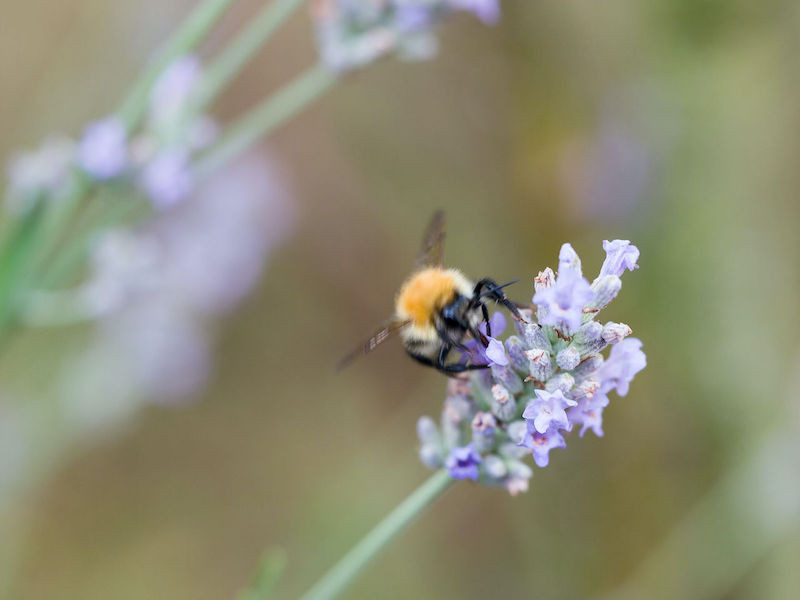
How to Help Native Bees
Published by Anne Altor on Dec 3rd 2022
Hello Friend of Pollinators! Thanks for your interest in how to help native bees.
Our last post introduced the fascinating world of native bees, honey bees, and threats to bee populations. That knowledge points to ways that humans can positively affect bees and other pollinators. Below, we describe action areas that have a direct impact on native pollinators. See which ideas speak to you and buzz into action where you can!
Choose local food whenever possible.
Local agriculture supports local ecosystems and economies. It is rarely as chemical-intensive or singular crop-focused as industrial agriculture. Locally grown food tastes better, comes from regionally adapted varieties and microbiomes, and provides a way to meet others in your community who care about these issues. Find local food at farmer's markets, farm stands, restaurants that work with local growers, and through Community Supported Agriculture programs. Local Harvest helps you find all of these resources.
Choose organic when you can
When you shop at the grocery store, choose organic foods when you can. Foods that haven't been sprayed with insecticides and herbicides are better for the soil, atmosphere, water and pollinators. Better yet, look for the emerging "Regenerative Organic" certification, which goes further than standard organic certifications. Regenerative Organic includes requirements for building soil health, protecting animal welfare, and promoting social fairness in farm operations. A question comes up as to Organic or Local? When I have the choice, I go with local. Most small scale farmers are conscientious about what chemicals they use on their farms. Formal organic certifications are really not designed for small growers. Local foods have another benefit of reduced transportation impacts compared to organic foods trucked in from long distances. In addition to food, choosing organic or upcycled fabrics when possible also supports healthier land use.
Plant pollinator-friendly species
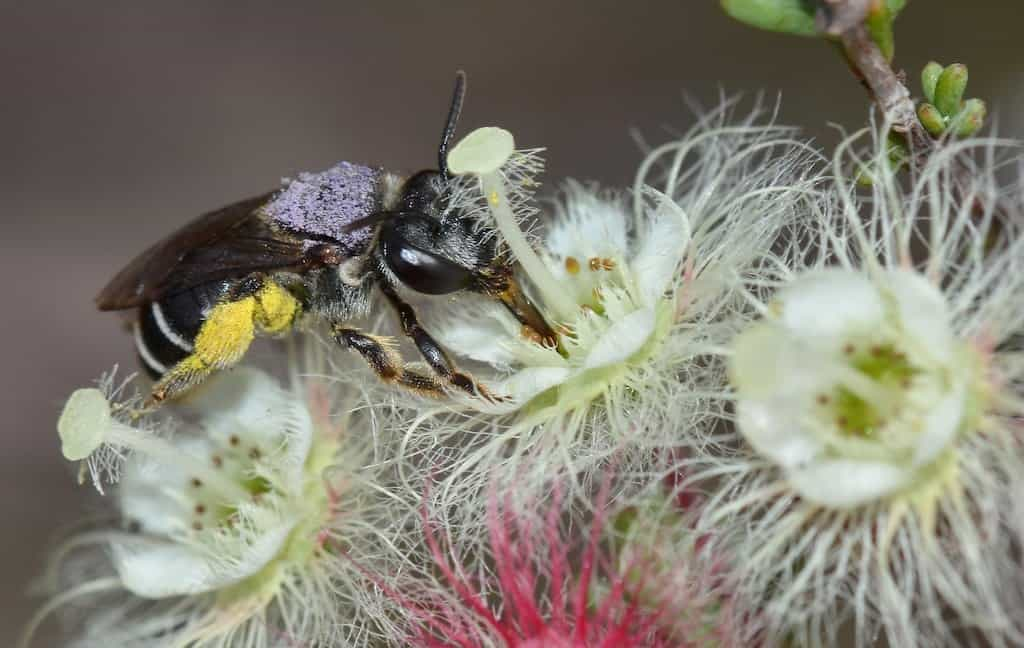
Native_bee Jean's Photos, Wikimedia Commons
Whether you have a patio or a yard, you can choose plantings that are beautiful and support native pollinators. If you garden, plant flowering perennials (and some annuals) among and beside your vegetables. This helps ensure your crops get well pollinated and adds structure, diversity and beauty to your garden. Some flowers, like nasturtiums, are edible and help keep pests away from your vegetables.
If you're more into growing flowers than vegetables, there are many ways to help native bees. Begin by learning more about the plants that are native to your area. These are the most likely to support native pollinators, birds and soil ecology. When you're choosing plants, aim for a range of flowering times so there are flowers available from spring through fall. Many native plants also have edible and medicinal uses that are fun and healthful to learn about. Here are some quick links to get you started:
The National Wildlife Foundation's Native Plant Finder helps you find species that are native to your area and thus support native pollinators.
Find pollinator-friendly native plant lists by state, a resource published by the Xerces Society.
Bringing Nature Home (book) by Doug Tallamy.
More habitat features that help native bees
Along with flowers, native bees need nesting and hibernation sites. Here are ways you can ensure they have both (from the Xerces Society for Invertebrate Conservation):
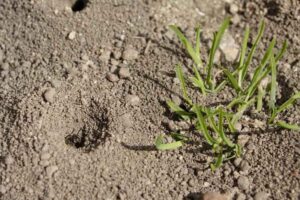
Andrena sp. nesting in soil. Photo by Jeveraars, Wikimedia Commons
Leave exposed dirt patches
The 70% of native bees that nest in the ground need unobstructed access to bare soil. Mulch plays many important roles in gardens, but make sure you leave some areas of bare ground exposed throughout your yard so bees can nest and hibernate. It's also helpful to have a fresh water source in the yard. This can be a bird-bath or simple dish you keep full of clean water. Some bees need mud for their nests, and all creatures need clean water.
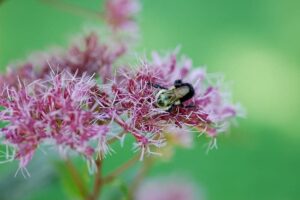 Grow plants with hollow stems
Grow plants with hollow stems
Many native bees nest or overwinter in plant stems. You can provide this habitat by planting species like raspberries, Joe-Pye Weed, elderberries, native grasses and rushes. At the end of the growing season, cut some of the current year's stems down to a range of heights between 6″ and 18″. That creates pollinator hibernation sites (and nesting sites for the next growing season). Birds will appreciate it if you leave the flower heads too, which provide seed and shelter for them over the winter.
Leave dead trees standing or provide logs
Trees are the great providers, throughout all of their life stages. Dead wood provides important nesting habitat for native bees, other invertebrates and birds. Bees make nests in beetle tunnels in the wood where they lay their eggs and rear young. Leave tree stumps in place, or add a small log pile in an out-of-the-way spot to create a home for bees and other wildlife.
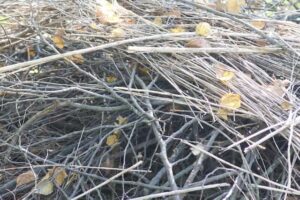
Photo by Anne Altor
Make a brush pile
Brush piles are prime habitats for small mammals, native bees and birds. They provide food, shelter and nesting areas, which are often lacking in suburban areas. Brush piles will treat you to great wildlife watching, and they break down into organic matter that's good for the garden.
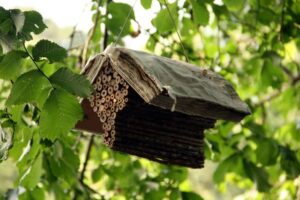
bee hotel. Photo by Graham Hogg, Wikimedia Commons.
Put up a bee hotel
Bee hotels (nesting tunnels) can add more nesting habitat to your yard. However, the Xerces Society emphasizes that these are not "set it and forget it" structures. They can be harmful if not maintained properly, because they can accumulate pathogens and diseases. This link provides a detailed guide on building and maintaining bee hotels.
Reconsider your lawn-care routine
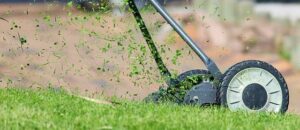
How we mow and maintain our yards has a big impact on pollinators and the ecology of the whole system. Chemically treated lawns aren't good places for children, adults, pollinators, birds or much else. A yard that lets the wild in is alive and full of wonders. Yes, some mental re-training might be required. We often need to unlearn untruths we've grown up with. The "standard" of the bright green, tidy lawn is pushed by chemical and GMO seed companies. Life is better served by learning new paradigms.
Check out our posts below for info on:
Mowing strategies that benefit wildlife
Changing your end-of-season yard cleanup routine
Pay attention to land-use changes happening around you.
Be an advocate for land protection and local agriculture. Encourage your community or HOA to plant native species and to limit pesticide use. Consider running for the board of your HOA so you can work on these issues from the inside. Check out the National Wildlife Foundation's Guide to Passing Wildlife-Friendly Property Maintenance Ordinances. This guide "is for mayors, heads of local and tribal governments, municipal staff, homeowners' associations, and others who want to promote the expansion of wildlife- friendly habitats in their communities."
Check out Doug Tallamy's Homegrown National Park initiative for inspiration and to get involved in "restoring habitat where we live and work."
And have fun with this! Working with Nature to create habitat – for ourselves and for other species – is a joy and privilege. If you have the opportunity to grow some of your own food as well as food for pollinators, enjoy this process. There's so much fun and learning, and as we pay attention to small and large details around us, the world of interconnection expands.
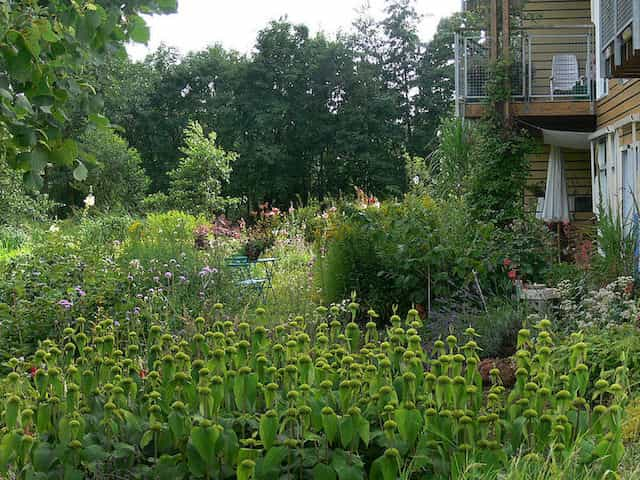
Lanxmeer Back Yard Garden. Photo by Lamiot

